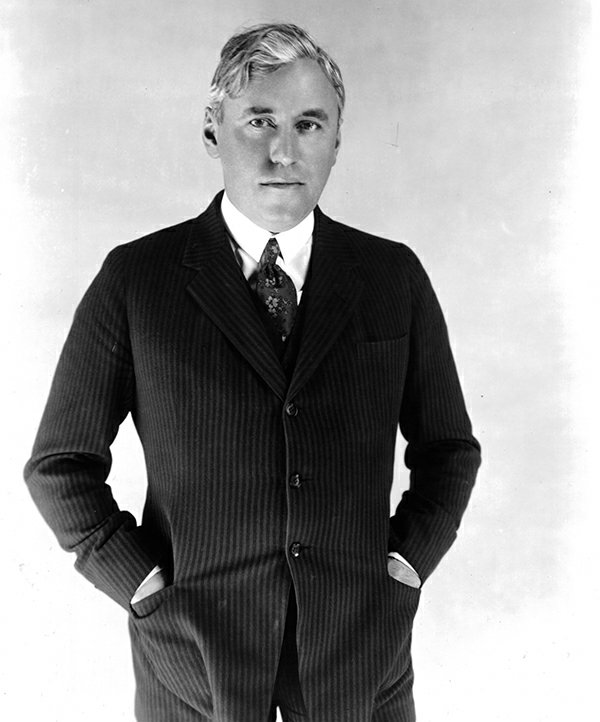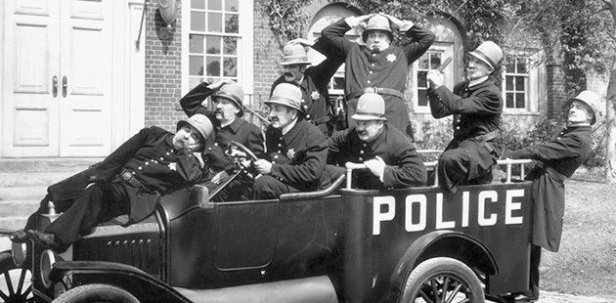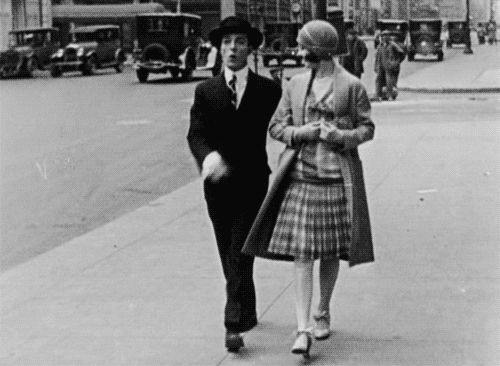
The earliest comedy in movies is the type of humor known as slapstick comedy, in which laughs are derived from characters falling down, getting hit on the head, bumping into a wall, etc. Slapstick is most closely associated with the silent film era because, as it turned out, silent film and slapstick were the perfect marriage. The first time this was clearly evident was in the films of Mack Sennett, the first successful comedy producer in Hollywood and the man known as the King of Comedy.
While Sennett was responsible for popularizing slapstick on an international level in the early 20th century, the history of slapstick goes all the way back to England in the 1600s. Ever hear of Punch and Judy? That puppet show about a guy who beats his wife with a stick? That stick Punch used was called a slapstick, and it made a comical “slap” sound when it hit something. A new genre of comedy had been born.
That type of humor migrated to the British stage and was a mainstay in 19th century pantomime. Even William Shakespeare incorporated slapstick into his plays, such as in The Comedy of Errors.
As a matter of fact, pie-in-the-face comedy originated in the British music halls when famous theatre impresario Fred Karno wanted to bypass censors who were strict about what they were aloud to say on stage. Years later, Hollywood would adopt similar logic in the production of their movies in the post-code era.

Today when you hear “slapstick” you might think of The Three Stooges, Tom and Jerry or MTV’s Jackass, but none of those things would exist without Mack Sennett.
Born in Canada in 1880, Sennett moved to New York to pursue a career in show business. He sang, danced, acted and eventually directed films for Biograph, the same film company where D.W. Griffith (The Birth of a Nation) got his start, and in many ways Sennett was to comedy what Griffith was to drama.
One benefit of working at the same studio as Griffith was that Sennett absorbed many of Griffith’s filmmaking techniques, the only difference being that Sennett had always wanted to make comedies.
Biograph wouldn’t let Sennett make humorous films so he founded his own independent company, Keystone Films, which may be the most important company in the history of comedy.


The Keystone films were zany and specialized in using physicality and motion to comic effect. This was the birth of American slapstick, filled with banana peels, pies, car chases and inept law enforcement. Anarchy, parody and non sequitor abound in these early silent films.
Sennett’s films usually conformed to one of three styles:
1. A conventional dramatic plot that was filled with gags but little story.
2. A place or situation and a series of gags related to it.
3. A parody.
This kind of formula was present in Mack Sennett’s first feature film Tillie’s Punctured Romance (1914) in which the entire film was a series of gags stringed together on a simplistic plot.
Keystone set the standard for comedy moving forward, and its influence can be seen in Looney Tunes, Monty Python and the films of Mel Brooks.
Many future film stars got their start working for Sennett and Keystone, including Charlie Chaplin, Fatty Arbuckle, Gloria Swanson, Harold Lloyd, W.C. Fields and Bing Crosby.



Sennett went from directing to producing in 1915, and in 1916 he scrapped Keystone altogether to produce comedies for the giants like First National, Paramount and Pathé.
He wouldn’t survive the transition into the sound era, but he had a permanent effect on American comedy that would continue to influence filmmakers to this day.
Perhaps the only person more influential on Hollywood comedy was Charlie Chaplin, who himself would quit Keystone to pursue his own filmmaking aspirations and push comedy into brand new territory.
More on that in my next blog, but for now, let us salute the comedy of Mack Sennett. It could only get more sophisticated from there. Although I am not one to discredit the legitimacy of slapstick. It is maybe the most consistently funny kind of comedy in history.



I’ve only seen the Keystone Kops in Abbott and Costello Meet the Keystone Kops.
LikeLiked by 1 person
A film in which Mack Sennett makes a cameo appearance by the way!
LikeLiked by 1 person